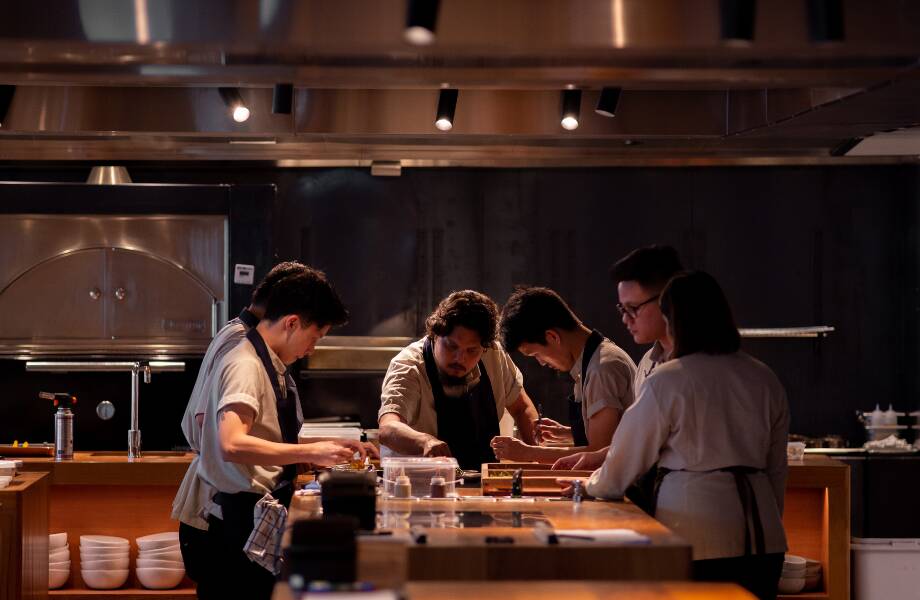[vc_row][vc_column][vc_column_text]
How do you know if a tea is good? This is a question that I not only get asked all the time, but one that I myself am constantly learning the answer to.
The ability to judge a tea before you brew it is an indispensable skill for tea connoisseurs and casual drinkers alike. It can save you serious time and money to be able to judge a tea by its look, feel, and smell. And these criteria vary by variety. If you judge a Yan Cha by the same characteristics as a Long Jing, you are going to end up buying some weird tea. That being said, there are some common characteristics that all good tea has in common.
Let’s start off with the obvious: looks matter. In the first installment of this three-part series, I’ll focus on sight, and how to judge tea quality based solely on appearance. Sight is the first sense we use when we are handed a tea. When tea experts closely examine the dried leaves, what do they look for?
1. Uniformity
The tea leaves should the same size and shape. A batch of quality tea is more or less made at one time using the same materials. You take a day’s picking from Field A, transport it to the facility, and process it. Sometimes farmers will mix two or three days together, or mix leaves from adjacent fields, but always when the leaves are harvested at around the same time.
What you don’t want is leaves that are vastly different from each other. You don’t want large round leaves, mixed in with small flat leaves, mixed in with twigs. (You never want twigs.) When you look at the leaves and they are a large variety of sizes and shapes, it means the tea maker threw a bunch of random pickings together. Each of these pickings has a different taste, and when you separate them, you are able to understand the full characteristics of that taste. Blending them together causes the flavors to clash and dilute each other. The exception for this rule is Da Hong Pao, which refers to a blend of different Yan Cha varities. Even if they are picked from the same area on the same day, a Shui Xian leaf and an Ai Jiao oolong leaf are different sizes, and thus when blended will stand out from each other.
2. Yellow Leaves
This is an extremely common problem. One of the trickiest things about picking tea for the farmer is knowing when to pick it. You want to pick the leaves when they are a good size and full of flavor. If you pick them too early, they are small and they are not developed enough to provide the full complexity. If you wait too long to pick, the leaves become too old and lose flavor — these are called yellow leaves.
It is most common to see yellow leaves in oolong and pu’er teas. You can distinguish the yellow leaf right away because when the leaf becomes too large, it loses its tenderness and cannot curl up in the proper shape. As a result, the yellow leaf is twice the size of other leaves. While yellow leaves are normal in tea making, there is a standard sorting step after the tea leaves are finished where someone will go through and take out the bad leaves. There isn’t a machine that can do this yet, so it must be done by hand. This means that if you open a bag and see a lot of yellow leaves, whoever made the tea did not care enough about it to pay someone to sort it, and therefore it won’t be good tea.
3. General Hue
The color of the tea leaf should never be solid. A well-made Long Jing has patches of brown and yellow in the leaf, while a well-made Anxi Tie Guan Yin has a whiteness to it. A good red tea should have a grey/silver hue to it.
The look of tea leaves can tell you a lot. One look at a Tie Guan Yin and you can tell if it’s from Taiwan or Anxi. (Anxi removes the stems, while the Taiwanese tend to roll them in.) Generally speaking, Chinese tea culture has placed on emphasis on physical beauty. With the exception of Mao Feng, which goes through no shape-making step, there is always a step to make the tea leaf look physically presentable. This step largely has no impact on the flavor, but it tells you a lot about the time and attention each tea-maker put into their product.
Tune in next week for Part 2 of this series, when we’ll get into judging tea with other senses, such as smell.
| Column Archive |[/vc_column_text][/vc_column][/vc_row]
















